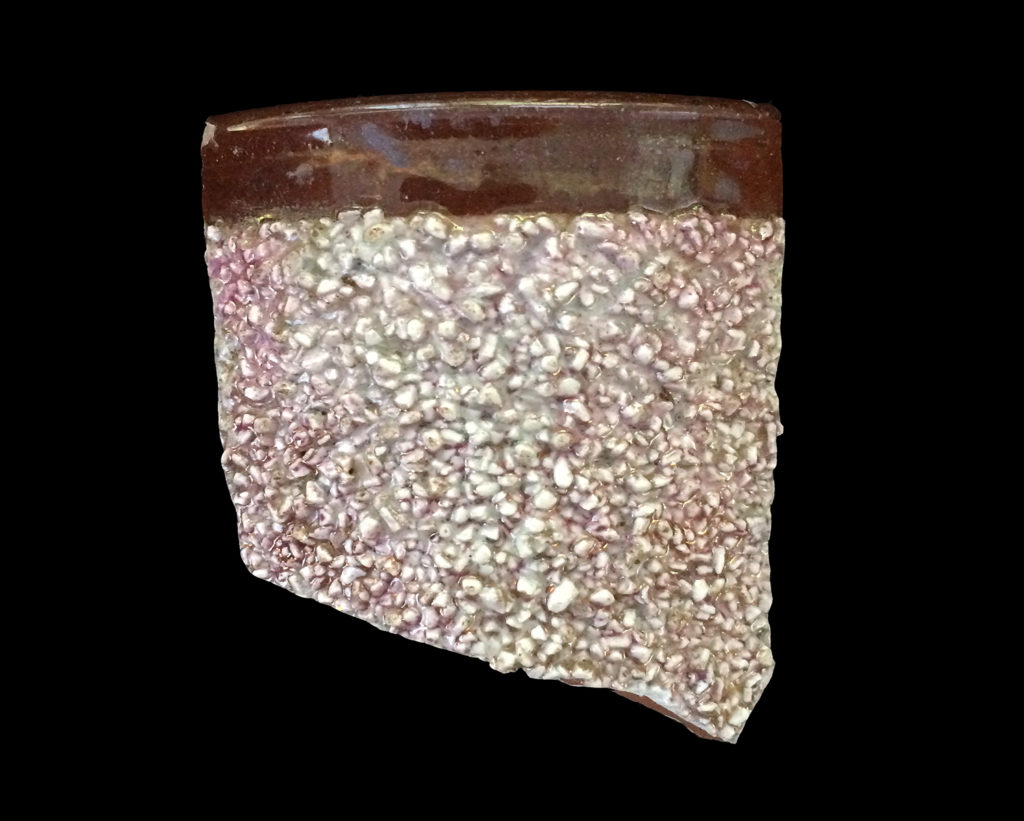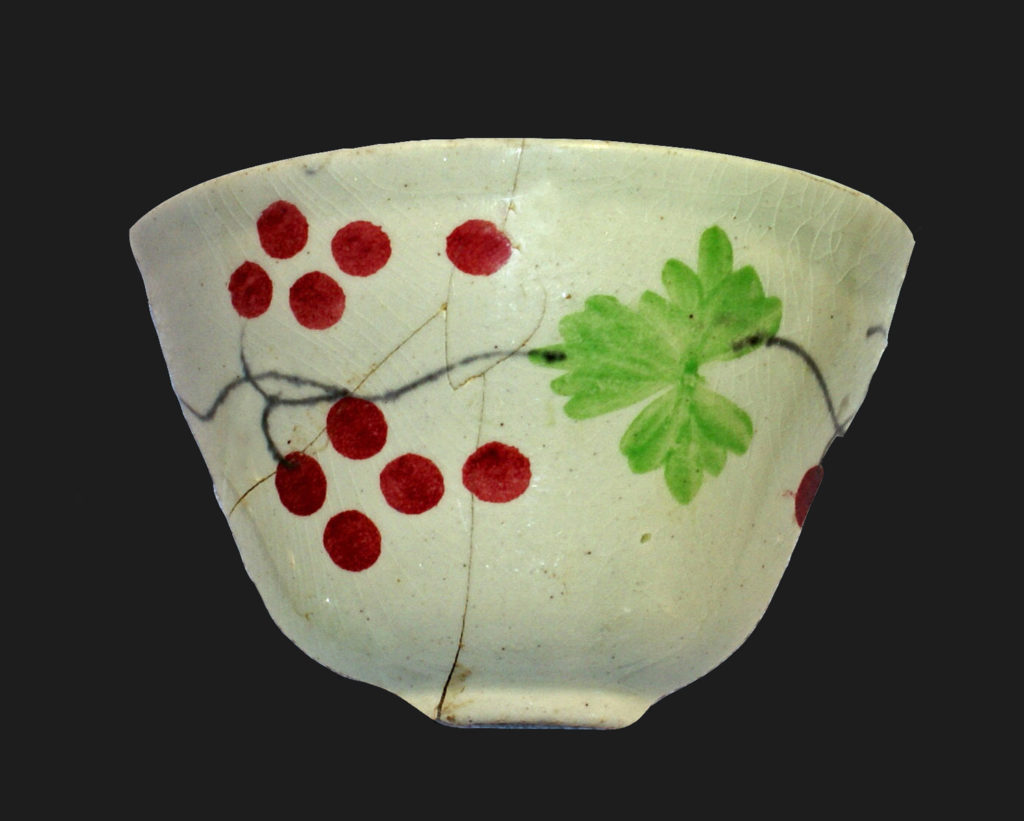Factory Slip: Mocha

In the nineteenth-century, these flowing designs were sometimes referred to as “seaweed.” The designs were supposed to resemble moss agate, which is also known as “mocha stone” (Priddy 2004:171). The artist used a brush to release drops of a “mocha tea” solution, with a combination of tobacco, stale urine and turpentine. The design spread instantly into a tree-like pattern […]
Hand-Painted: Early

Early hand-painted ceramics are usually pearlware, and the earliest used limited colour palettes, such as cobalt blue. After 1875, hand-painted wares began to incorporate earth tones such as orange (mustard), olive green and brown. The colours red and black did not appear until the 1830s. The hand-painted designs were most often floral motifs, ranging from large blossoms to smaller, more delicate […]
Yellow Ware

American yellow ware (or yellowware) has a dense, yellow-to-buff coloured body with a clear lead or alkaline glaze while the English variety has a cream to buff body with a yellow-tinted glaze. Annular factory slip decoration is most often seen, though sponged motifs and Rockingham glazes are not uncommon. Yellow ware should not be confused […]
Factory Slip: Encrustation

Some forms of ceramic vessels exhibiting different surfaces were produced using small dried pieces of clay in several colours. The clay bits were pressed into a solid colour slip field, producing the encrusted look. Sometimes a lathe, a machine that rotates an object on its axis, was used to smooth the vessel’s surface. This technique produced a finely-grained […]
Factory Slip: Cable

Cable ware, also known as “earthworm” by collectors, is a distinct factory slip motif. The decorative designs were produced using a multi-chambered slip cup, which would allow three or four different colour clay slips to flow onto the vessel. This category includes designs known as “cats-eyes” which occur from a single drop from a multi-chambered slip cup, with overlapped drops forming a […]
Hand-Painted: Late

This decorative type is found on refined white earthenware and ironstone ceramic vessels. The late palette includes chrome-based colours such as black, red, and true yellow and green. This is in contrast to the more earthy colours present in the early palette, such as mustard yellow and brown. Late palette motifs are often floral and […]
Old Don Jail Cemetery 2: Exhumation & Reburial
This particular reports details the exhumation and reburial process, as well as two-dimensional facial reconstructions for Burials 1, 3, and 5, drawn by professional forensic artist Victoria Lywood.
Old Don Jail Cemetery 1: Investigation
In 2007, ASI was retained to examine a burial area of Toronto’s Old Don Jail. The investigation led to to the discovery of fifteen individuals who were all hanged at the jail between 1872-1930. The report details the discovery of the unapproved cemetery and the subsequent identification of individuals.
The Archaeological History of the Wendat to A.D. 1651: An Overview

The foundations for modern scholarship concerning Wendat history and archaeology were laid in the late nineteenth and early twentieth centuries by researchers, such as Andrew Hunter and Arthur Jones, investigating hundreds of sites and ossuaries that had been reported to provincial authorities. The focus of their work and of the work of many of those […]
Transfer Print

[distance1] According to Snyder (1997:9), “transfer printing allowed a potter to quickly duplicate a pattern by transferring it from an [engraved] copper plate to a ceramic vessel via a specially treated paper. Transfer printed patterns appealed to consumers as the process afforded them the opportunity to purchase complete sets of dishes that were virtually identical, a […]


